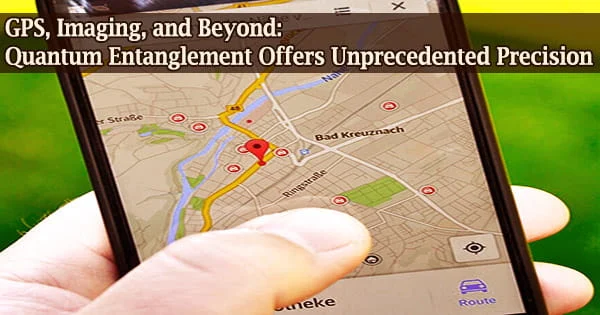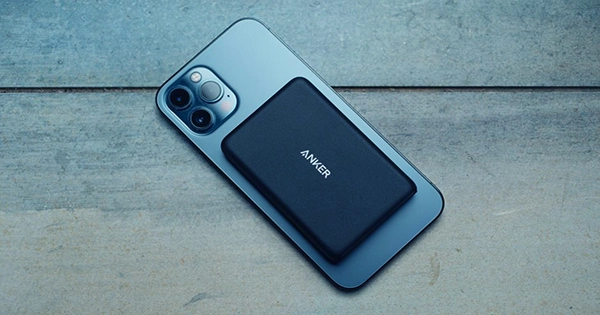Radio-frequency waves, often known as RF waves, are what power your phone’s GPS, your home WiFi, and communications on airplanes. RF waves to transport data from a transmitter to a sensor at one location.
Different approaches are used by the sensors to interpret this data. For instance, a GPS sensor uses the time it takes to receive a signal from a satellite to pinpoint its location.
A wireless sensor detects the angle at which it receives an RF wave for uses including indoor localisation and thwarting fake GPS signals. The sensor’s ability to measure this time delay or angle of arrival with greater accuracy will improve its ability to pinpoint a place and maintain security.
Researchers in engineering and optical sciences from the University of Arizona and engineers from General Dynamics Mission Systems present their findings in a paper that was just published in Physical Review Letters.
They show how combining the two techniques of radio frequency photonics sensing and quantum metrology can provide sensor networks with a level of precision that has never before been possible.
The work entails information conversion from electrons to photons, followed by quantum entanglement to improve photon sensing.
“This quantum sensing paradigm could create opportunities to improve GPS systems, astronomy laboratories, and biomedical imaging capabilities,” said Zheshen Zhang, assistant professor of materials science and engineering and optical sciences, and principal investigator of the university’s Quantum Information and Materials Group. “It could be used to improve the performance of any application that requires a network of sensors.”
We designed a bridge between an optical system and a physical quantity in a completely different domain. We demonstrated that with an RF domain in this experiment, but the idea could also be applied to other scenarios. For example, if you want to measure temperature using photons, you could use a thermo-optical transducer to convert the temperature into an optical property.
Zheshen Zhang
From Electrons to Photons
RF signal information is converted by conventional antenna sensors into an electrical current made up of moving electrons. However, optical sensing is a lot more effective since it employs photons, or units of light, to transport information.
Photonics-based sensing can convey that signal far farther than electronics-based sensing, and with less interference. Photons can hold more data than electrons, providing the signal a larger bandwidth.
The researchers employed an electro-optical transducer to transfer RF waves into the optical domain, a process known as RF-photonics sensing because optical signals have so many advantages.
“We designed a bridge between an optical system and a physical quantity in a completely different domain,” Zhang explained. “We demonstrated that with an RF domain in this experiment, but the idea could also be applied to other scenarios. For example, if you want to measure temperature using photons, you could use a thermo-optical transducer to convert the temperature into an optical property.”
Entangled Sensors
The researchers then used a method known as quantum metrology after transferring information to the optical domain. The so-called standard quantum limit often sets a sensor’s precision limit.
For instance, GPS on smartphones is often precise to within 16 feet. Entangled particles are used in quantum metrology to surpass the conventional quantum limit and perform ultrasensitive observations.
How does it work?
As long as the proper measurements are made, entangled particles are bound together so that whatever occurs to one particle also impacts the other particles.
Think about a project that a manager and an employee are working on jointly. The effectiveness of their collaboration is constrained since it takes time for the employee to communicate with his boss via techniques like emails and meetings.
But if the two could mesh their minds, the employee and the supervisor would instantly share the same knowledge, saving time and enabling them to work together to solve an issue more successfully.
In facilities like the Laser Interferometer Gravitational-Wave Observatory, or LIGO, which has given astronomers a new window, quantum metrology has been employed to increase sensor precision. But almost all earlier quantum metrology experiments, like LIGO, only used one sensor.
Connecting Sensor Networks
However, RF waves are typically picked up by a network of sensors, each of which independently analyses information, acting more like a team of autonomous workers reporting to their managers. A theoretical framework to improve performance by combining entangled sensors was previously demonstrated by Quntao Zhuang, an assistant professor of electrical and computer engineering at the University of Arizona.
With this novel experiment, it was shown for the first time that a network of three sensors may be entangled, which means that all of them can correlate data from probes simultaneously.
It would be more like if a group of employees could instantaneously exchange information with their superiors, and the bosses could immediately share that information with one another, greatly streamlining their workflow.
“Typically, in a complex system for example, a wireless communications network or even our cellphones there’s not just a single sensor, but a set of sensors that work together to undertake a task,” Zhang said.
“We’ve developed a technology to entangle these sensors, rather than having them operate individually. They can use their entanglement to ‘talk’ to each other during the sensing period, which can significantly improve sensing performance.”
Despite the fact that the experiment only used three sensors, it paves the way for the technology to potentially be employed in networks of hundreds of sensors.
“Imagine, for example, a network for biological sensing: You can entangle these biosensors so that they work together to identify the species of a biological molecule, or to detect neural activities more precisely than a classical sensor array,” Zhang said. “Really, this technique could be applied to any application that requires an array or network of sensors.”
The University of Arizona campus’s entangled photon network is one possible use for this technology. Zhuang explained how machine learning approaches can teach sensors in a large-scale entangled sensor network like this one to perform extremely precise measurements in theory work published in Physical Review X in 2019.
“Entanglement allows sensors to more precisely extract features from the parameters being sensed, allowing for better performance in machine learning tasks such as sensor data classification and principal component analysis,” Zhuang said. “Our previous work provides a theoretical design of an entanglement-enhanced machine learning system that outperforms classical systems.”
In addition to Zhang and Zhuang, the paper’s authors were Yi Xia, PhD student in optical sciences; Wei Li, a postdoctoral researcher in the Department of Materials Science and Engineering; and William Clark and Darlene Hart of General Dynamics Mission Systems.
















